Wireless Technology Assignment: Critical Discussion On Wifi/Bluetooth
Question
Task:
Introduction
This is a scenario-based Coursework (CW). The CW provides the scenario and the problem statement around the scenario. It also provides the list of potentially suitable wireless technologies. Your wireless technology assignment task is to select and apply suitable technology/combination of technologies to the scenario to suggest a suitable solution.
Coursework Specification
Problem statement
Currently, wireless technologies namely Bluetooth, UWB, Zigbee, and Wi-Fi are used for wireless communication in various contexts. However, the selection of these technologies depends on various factors such as the type of application, resource requirement etc.
A network service provider is in the process of selecting appropriate technologies for different sections of a new proposed wireless network for an industrial site that covers both indoor and outdoor areas. The total area that needs to be covered is about 1200m2. The purpose of this proposed wireless network is to monitor various sections of the site, enable communication between them and forward the data to the central administrator in the control room.
Detailed requirements and criteria is given below along with marking scheme against individual components.
A list of potential application areas/technologies could be providing:
- ‘Bluetooth’ communication when a security breach is detected, to transfer the alarm conditions from the security devices (such as CCTV) onto the respective devices such as the siren, bell, etc.
- ‘WiFi’ to support communication among the fixed and mobile devices of the workers in basement level 2; OR to support communication among the automated vehicles in an indoor factory area.
- ‘WiFi/Bluetooth’ to facilitate communication between the networked machines and simpler devices such as office PA system, barcode readers, timers, etc.
- ‘Zigbee’ to provide asset management in their stores; automation of an industrial section that controls temperature and lighting of that section.
- ‘UWB’ to provide high speed, high density data transfer among a range of networked machines in an office; OR for continuous monitoring of the secure area of a campus for motion of objects as small as a small-unmanned vehicle.
Selecting one application from A to E above, design a case study and write a report to answer the following questions.
- Which of the above application areas and technologies you have selected?
- What are the reasons for you to consider the selected technology to be suitable for the application considered?
- Design a schematic diagram to show how you would implement the technology for the potential application scenario.
- What are the assumptions that need to be considered for the above design? The assumptions may include, transmission power, channel bandwidth, total area of application, distance between the sensor devices, distance between the nodes and final destination, etc.
- What are the assumptions that need to be considered for the above design? The assumptions may include, transmission power, channel bandwidth, total area of application, distance between the sensor devices, distance between the nodes and final destination, etc.
Answer
Introduction
It evident in this wireless technology assignment that network technology supports connections between multiple devices, such as laptops, notebooks, printers, media, mobile phones, or digital toys. In some cases, especially in WiFi networks, wireless devices may be present in other network devices, such as access points, routers, and switches, allowing data to be transferred from one wireless device to another.
I have selected the technology of Wifi/Bluetooth that will facilitate the communication between simpler machine and networked machine.There are many reasons to choose different WiFi / Bluetooth technologies, the first devices on the network to be connected using radio waves. It gives you more flexibility when you place different devices where you want. This technique reduces the possibility of complications associated with electricity collection. Systems that use wireless technology are usually smaller because they do not require wires. In addition, some sensors require the use of wireless technology, such as sensors in the human body, for communication.
Wireless is better than wired communication for many practical reasons. Wireless smart cameras need to be connected to exchanges and / or other cameras. There are many wireless protocols and standards. Because cheap communication is important for a wireless camera, low communication standards such as ZigBee and Bluetooth, which are common in wireless touch networks, are also important in smart picture networks. Low power consumption means low bandwidth and short transmission, so real-time gaming is not possible on low-power networks.
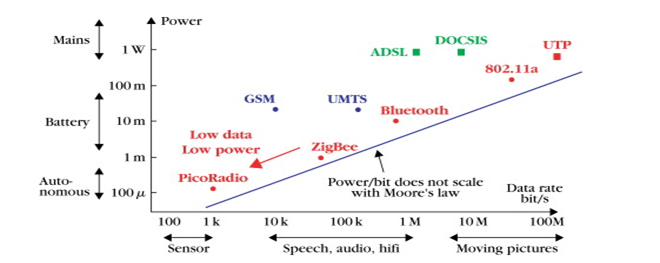
(Boeij, 2018)
As consumers move to computing devices, demand for wireless networks will increase and manufacturers will continue to develop more efficient wireless devices. The diversity of wireless networks is huge and diverse. Many consumers use a wireless Internet network at home on multiple devices. Many of the same consumers use wireless networks to connect mobile phones to a private space. Eventually, many cities began setting up wireless networks to provide connections to large areas.
In practice, the method of communication between mobile stations via a wireless network consists of: establishing a Bluetooth connection (BT connection); Establish an IEEE 802.11 connection; Supports BT and IEEE 802.11 connections simultaneously; and send packets over Bluetooth data (BT data packet) using IEEE 802.11 connection.
In another function, which is simultaneous communication over a wireless communication network, the device includes: a basic mobile station for establishing one or more connections to one or mor mobile devices; A master device connecting the first and second connections to at least one mobile device, the first Bluetooth connection (BT connection) and the second IEEE 802.11 connection; The primary mobile device to form a third-party connection to the secondary mobile device, a third-party access to the IEEE 802.11; The primary mobile device simultaneously connects to BT and IEEE 802.11, the primary mobile device sends data to the secondary mobile device simultaneously (Rondón, 2017).
Schematic diagram
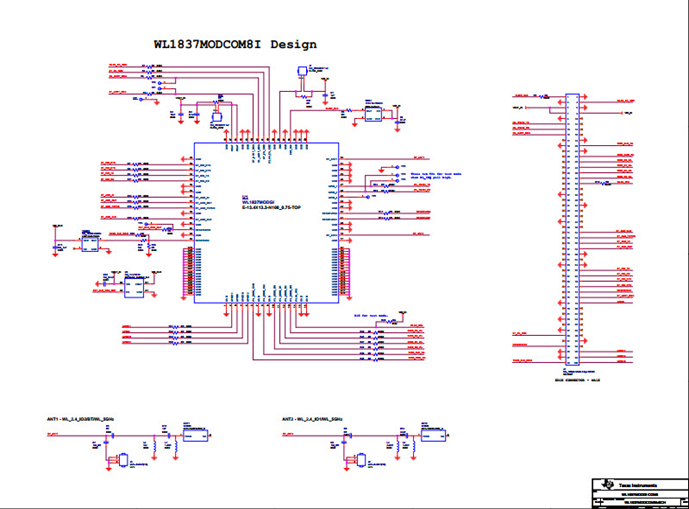
The WiFi/Bluetooth is a well-known wireless standard for short-distance communication. The limit is usually about 50 feet, but this is possible at a limit that increases the sensitivity of the receiver, increases the transmission power, or both.
As the name suggests, the Bluetooth LE is a rare “classic” version of Bluetooth, making it very suitable for small devices with a battery available. PLE is a leading Internet of Things (IoT) product. It is designed for devices that only need to send relatively small packets instead of audio signals. Most modern smartphones and tablets support low Bluetooth power consumption.
Bluetooth smartphones communicate on radio frequencies at 2.4 GHz through industry, science and medicine (ISM). Active PLE devices support a wide range of applications and products from remote controls and smart toys to remote monitoring via control sensors. BLE devices are covered by Bluetooth 4.0 + Bluetooth features(Rondón, 2017)
Assumptions
Transmission power
Due to the wider choice of security protocols and additional layers, WiFi uses more energy than Bluetooth. If you need a cheap device, connect it to Bluetooth, which consumes nearly 3 billion in energy.
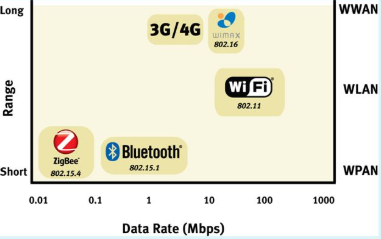
Channel bandwidth
Wi-Fi uses one of 12 repetitive frequencies in the 22 MHz band, and the Bluetooth frequency is evenly distributed between 79 1 MHz channels.
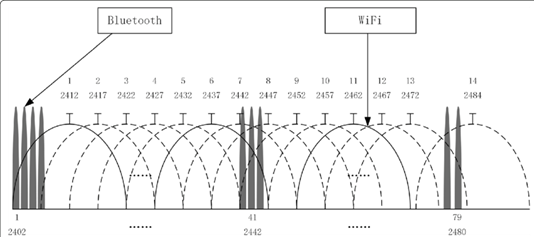
Total area of application
Bluetooth allows you to connect up to 7 devices to a private network (PAN). Both Wi-Fi connections do not have the same restrictions, but depending on how many devices your Wi-Fi network can depend on, the connected router is covered.
Distance between the sensor devices
The distance between the two samples was effectively measured with an accuracy of 5-10 cm and compared with an accuracy of approx. 5 m WiFi and Bluetooth. If they are placed when selecting measuring points, the position can be calculated with an accuracy of 10 cm.
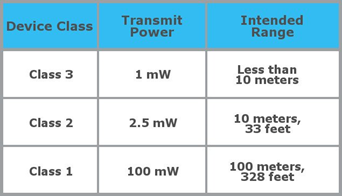
Frequency
Bluetooth only works at 2.4 GHz, while many Wi-Fi networks operate at 2.4 GHz and 5 GHz. Now you can find the latest in wireless devices with a radio frequency of at least 5 GHz or less than 2.4 GHz. They also help reduce the likelihood of Wi-Fi and Bluetooth networks.
Data Transfer
Bluetooth 4.0 can only send data at 25 Mbit / s, while the latest version of WiFi can send data at 250 Mbit / s. Note that Bluetooth devices do not download large files, even though there is a good balance between them. and their low speed is ideal for voice communication.
Range
The distance from the Bluetooth network is about 30 meters, the latest WiFi version takes up to 100 meters. It is important to remember to design something uneven aircraft; you have to fly in this series.
Distance between edges and final destination
Parallel connection management enables dynamic device-to-device connections, multi-optical packet management and optimal long-term packet delivery, as well as temporary wireless networks and synchronization devices for the deployment and implementation of wireless applications(Sattel, 2016)
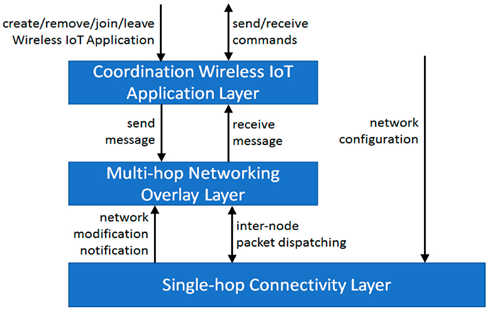
Within the framework of the proposed framework, the primary purpose of the integrated network layer is to support the installation and access of IP subnetworks based on the wireless protocols available on mobile nodes. In particular, the layer must have the following characteristics of Manually set up the IP connection.
In this case, developers can adapt networks to achieve specific goals based on in-depth environmental information, e.g., location and movement. Because nodes can have unpredictable workflows, each interface can be configured manually (or more complexly, at a higher cost, for data transfer and centralized management);
The management of intellectual property rights is completely independent. If you want too many nodes in one place, you need to change the layered network settings and connect them all at once. Higher dynamics can be achieved if the complexity of the relationship is completely hidden.
Performance Of The System
WiFi is a technology that transmits Internet signals and converts them into radio waves. These radio waves can be transmitted about 65 meters away from devices with a wireless adapter. In recent years, many WiFi features have been developed, since 802.11b (1999), followed by the 802.11g configuration in 2003 and the 802.11n configuration in 2009. Each new description improves Wi-Fi and bidding options. In addition. use. One of the first places to use WiFi places was at home. Home users buy WiFi routers, connect them to a broadband connection, and then connect to multiple Wi-Fi devices.
Packet loss
When you send a frame to an IEEE Internet 802.11 WIFI device, the Bluetooth device may begin to transmit packets. This can cause IEEE Internet Station 802.11 to retransmit the frame when the target detects that it is sending authentication. This lack of integration is the basis for interference between Bluetooth and 802.11 WIFI device. If the connection time exceeds the check time of the unapproved packet, a connection loss due to an error or condition that is not in the frame is determined.
Asynchronous connection less (ACL) link
Data transfer is called ACL, which differs from SCO transfer in many ways. No communication errors allowed. If an error occurs, the packaging must be replaced again. Various methods can be used for this. For Bluetooth ACL transmission, the system is waiting for a recipient. Return the packages until you receive a receipt. The recipient checks the bag and regularly checks the discount code (CRC) to make sure the packages are correct. Check the ACL-Tx switch (PPS). The low error rate (BER) is not very important. If a significant change is required, the change can be minimized.
Stability
The magnitude and location of small errors in the desired group depend on the signal-to-noise ratio (SNR) of the receiver, the type of transmitter and alarm modulator, and the channel model. Energy management can have fewer benefits in an integrated environment. Increasing the WLAN bandwidth by 50 times is not enough to reduce the Bluetooth power from the loss of the WLAN packet, while adding Bluetooth interference and limiting the WLAN power can prevent Bluetooth interference(Anil, 2010)
Reliability
The reliability is one of the most important factors when using WiFi / Bluetooth technology. As data on its relevance disappears over time and the data collected becomes obsolete, it is important to change the number of systems and the completion time by reducing the overall performance of the system. If data packets are frequently lost, the protocol is not guaranteed for industrial applications, even if the maximum transmission delay is reached. The main reason for unstructured behavior is CPR programs.
The obvious solution to reduce this problem is the number of transfers each background. Thus, the maximum delay in energy transfer can be predicted, but it also increases the loss of pocket. For example, copying is not allowed for any of the data tables that demonstrate the sensitive reliability of the behavioral decision indicator(Boeij, 2018)
Conclusion
Bluetooth technology provides profiles that allow devices to perform certain tasks, regardless of manufacturer, operating system, or device. Although Bluetooth devices use profiles in relation to each other, they use a transmitter / receiver that typically offers less bandwidth and shorter bandwidth than devices with WiFi technology. Therefore, a system capable of converting data from Bluetooth profiles for data transfer using two network protocols, such as Bluetooth and WiFi, for wireless transfer between mobile devices.
References
Anil, M. (2010). Interference of 802.11B WLAN and Bluetooth: Analysis and Performance Evaluation. Retrieved from https://www.researchgate.net/publication/43655983_Interference_of_80211B_WLAN_and_
Bluetooth_Analysis_and_Performance_Evaluation
Boeij, J. d. (2018). Low-Latency Wireless Data Transfer for Motion Control. Retrieved from https://www.hindawi.com/journals/jcse/2009/591506/
Rondón, R. (2017). Evaluating Bluetooth Low Energy Suitability for Time-Critical Industrial IoT Applications. wireless technology assignment Retrieved from https://link.springer.com/article/10.1007/s10776-017-0357-0.
Sattel, S. (2016). WiFi vs. Bluetooth: Wireless Electronics Basics. Retrieved from https://www.autodesk.com/products/eagle/blog/wifi-vs-bluetooth-wireless-electronics-basics/#:~:text=Power,about%203%20milliamps%20of%20current












